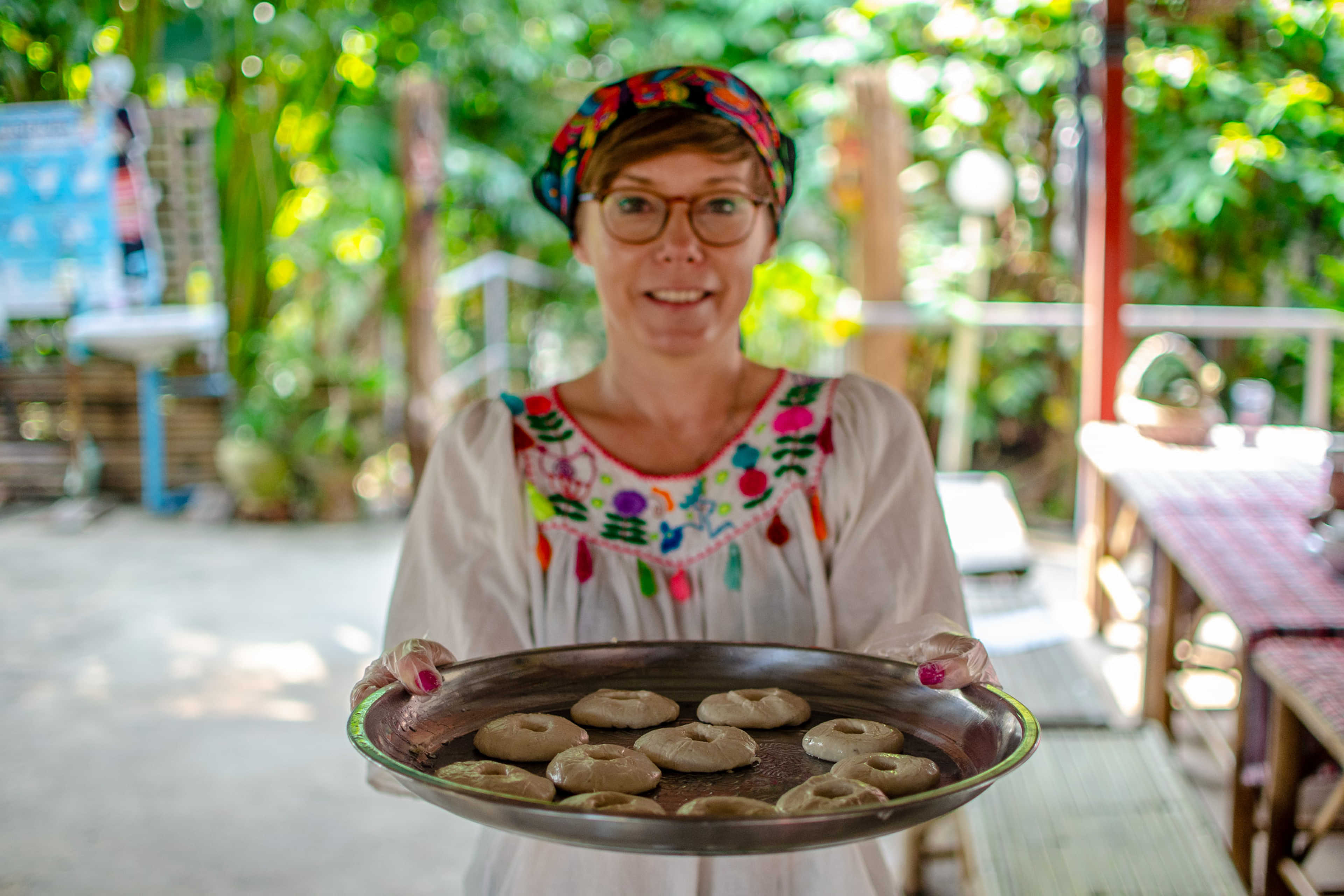
Diary
Cooking course with Tai Lue people in Doi Saket, near Chiang Mai
Destinations
Joanna Horanin
Hi, I'm Joanna, the author of The Blond Travels. In the worlds of Thailand and Portugal, I feel like a fish in water - and it's no coincidence! I've been exploring Thailand for over a decade, and I've settled in Portugal for 6 years now. My mission is to support Dreamers - just like you - in discovering these fascinating countries and helping those in love with them find their own place on Earth, preferably for good! Let's uncover these unique corners of the world together.
Remember how I got crashed a Thai funeral? By accident, of course, but that story will stay with me for a very long time. The result was a cooking course with a lady from the Tai Lue tribe in Doi Saket. It was one of those days where you know you’ve hit non-tourist Thailand, a place that virtually no one outside of a small group of people knows about. Here’s how I cooked with the Tai Lue people near Chiang Mai.
Tai Lue and their community centre
I returned a week after the funeral. At the time of the ceremony, the place was besieged by people. Now there was no one there except for an old lady standing in the middle of the courtyard eating fruit.
Although I had made an appointment to meet her, it was clear that she was totally surprised by my arrival. Only after a while did an expression of recognition and understanding appear on her face. She smiled at me and pulled out her phone. “One moment,” she said, “please wait,” then disappeared into the depths of the yard, only to return a minute later with the phone in her hand. I think she was a little concerned that she couldn’t handle the language.
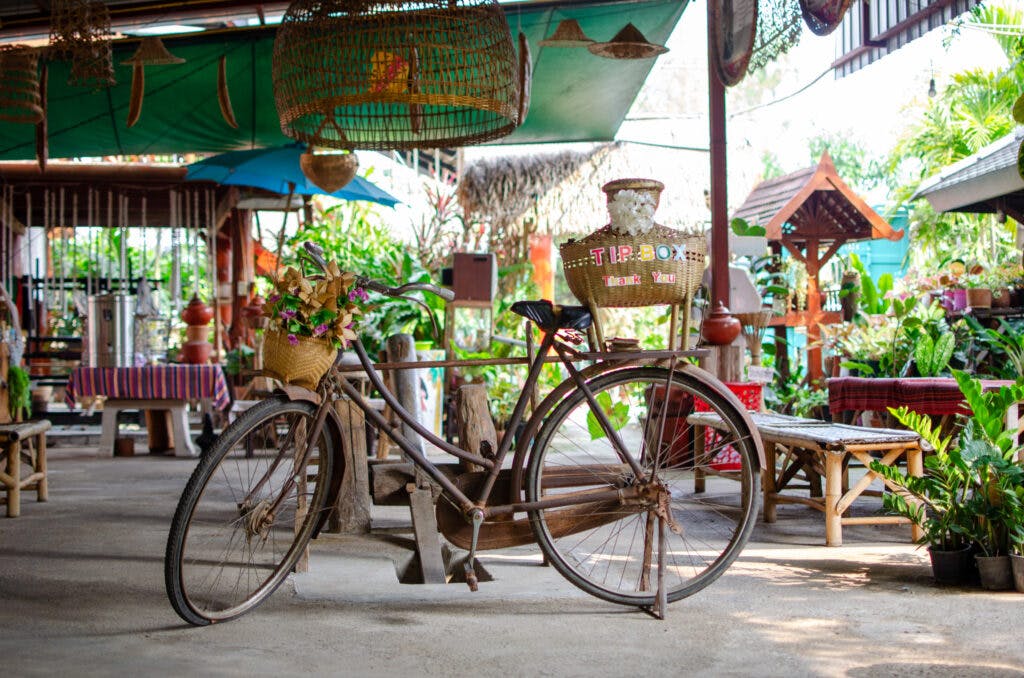
“What do you want to cook?” – she asked. “Doughnuts,” I answered without thinking. We quickly agreed that we would make donuts, fish, and something to go with the fish. For me, this was a fantastic idea, and I was already getting ready for a cooking course.

Are you looking for a local guide? Are you after an interesting tour?
TakeMeTour connects local guides with tourists and creates unique tours in South East Asia.
Spend a day with your private guide, find out more about the country and make new friends.
Book your tour with TakeMeTour.An elderly lady, whose name I can’t remember, made another phone call. This time I understood that she was asking someone to come and make a meal with me.
Moments later, I was greeted by another elderly lady, dressed in traditional Tai Luea attire.
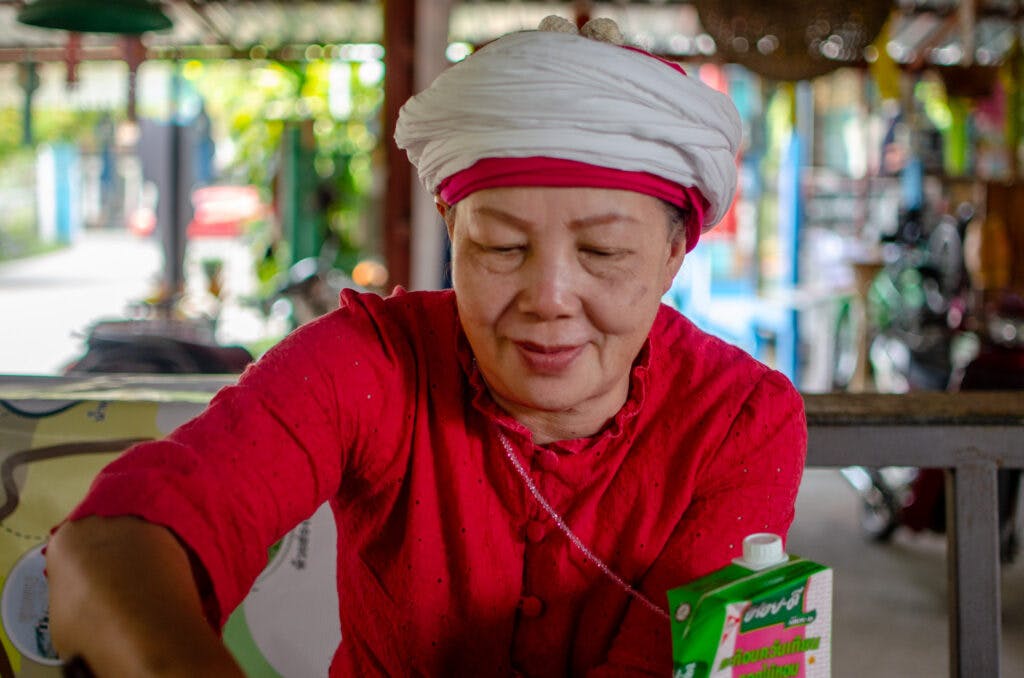
Tai Lue minority and their donuts
The Tai Lue tribe arrived in Thailand a few centuries ago from China, in Yunan province. They quickly established themselves here. Today they can be found in Chiang Mai, Chiang Rai and Phayao in northern Thailand.
Their costumes are distinguished by a white turban on their heads. Women also add the colour pink to it. For special occasions, they wear black short jackets with a stand-up collar, long skirts or straight pants (in men).
Tai Lue, of course, have their own cuisine. Most distinctive are their donuts – khanom wong, which look a bit like American donuts. They have a hole in the middle and are relatively small. But, they taste much better and quite different from what we know from our own backyard.
Making donuts – khanom wong
Pi Pong, for that was the name of my instructor, was a person well into her 60s, but time had not painted wrinkles or age spots on her face. She was a woman with verve, but gentle, patient and very friendly. She also spoke no English. She remembered a few words. My Thai was certainly better than her English. We did get along, however. Cooking, after all, is about doing, not talking. She would show me what to do, and I would imitate her.
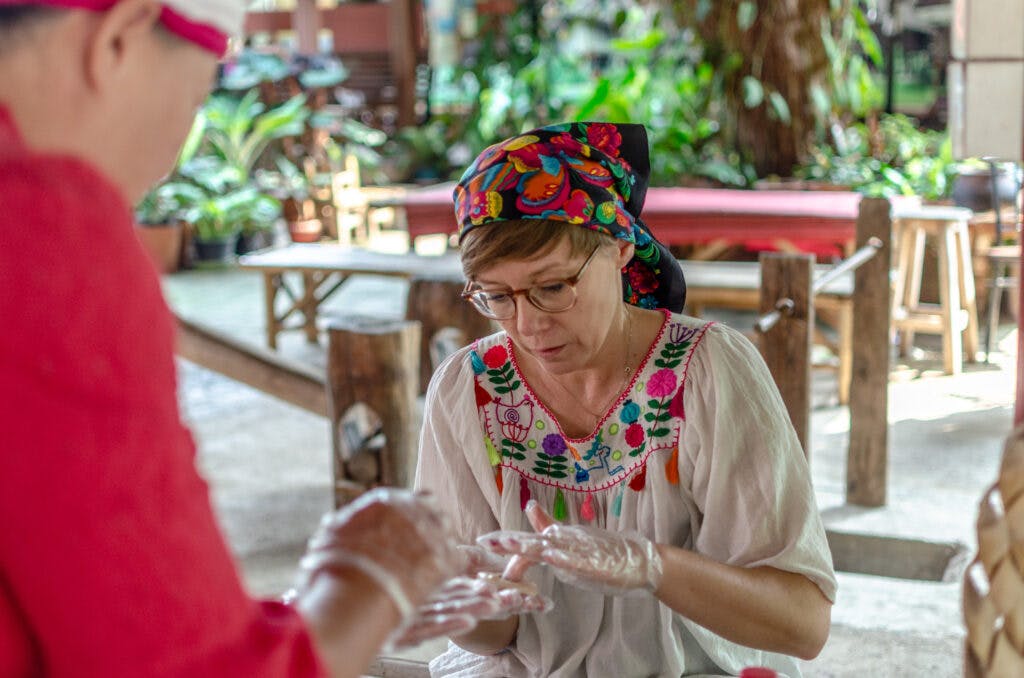
It was also an opportunity for me to check in with my Thai after a year of not using or taking lessons. So I asked her questions – whether she had children, whether she was a Buddhist, whether she liked living in the countryside. She was happy to have short chats with me, which quickly ended because we were limited by language, however.

Travel like a local using trains and buses! With 12Go you can now easily book tickets for rides through Thailand, Malaysia, Cambodia, Vietnam, Laos, or Singapore. Buy bus or train tickets
The khanom wong donuts are made simply, although you need the ingredients for it. Sticky rice flour is mixed with soy flour, with coconut milk, 2 kinds of bananas are added – one (thicker and short) is less ripe, the other (the same as we have in Europe) must be almost black. This one we give only half. We crush the bananas and mix everything together into a solid mass. After getting it, we tear off a piece, make a ball, flatten it, and then make a hole in it.
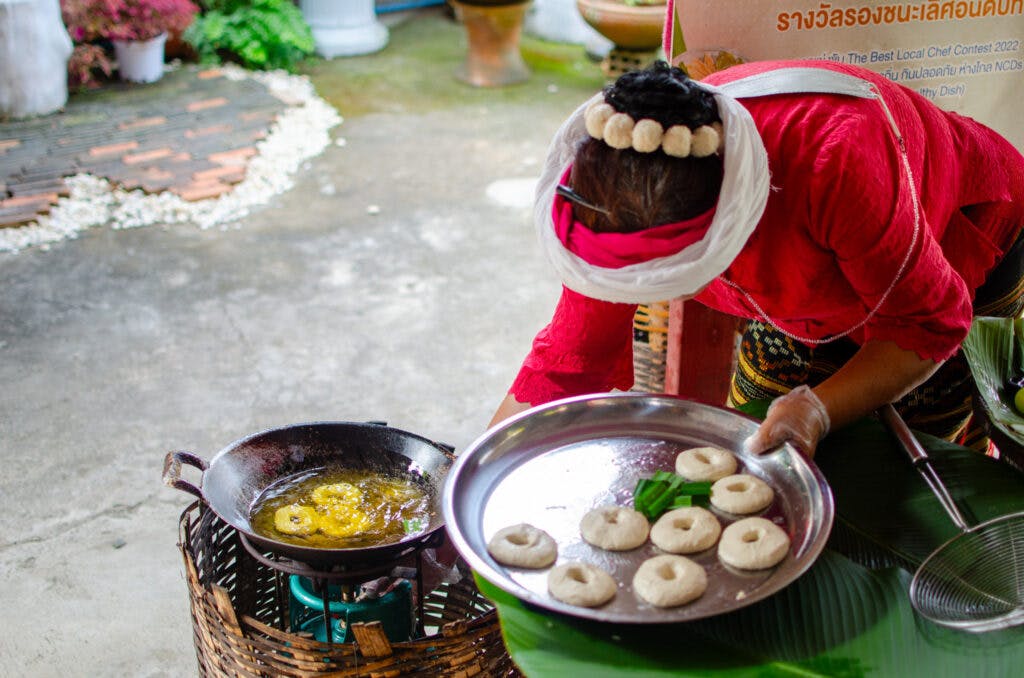
Such Thai donuts are fried in hot oil, turning them over every now and then. When they are already dark brown, we fish them out and drain. This is not the end! Once they have cooled slightly, we scoop them onto long toothpicks. Then, one side is lightly dipped in brown sugar dissolved in water and then the same side is touched with lightly sprinkled white sesame seeds on the plate.
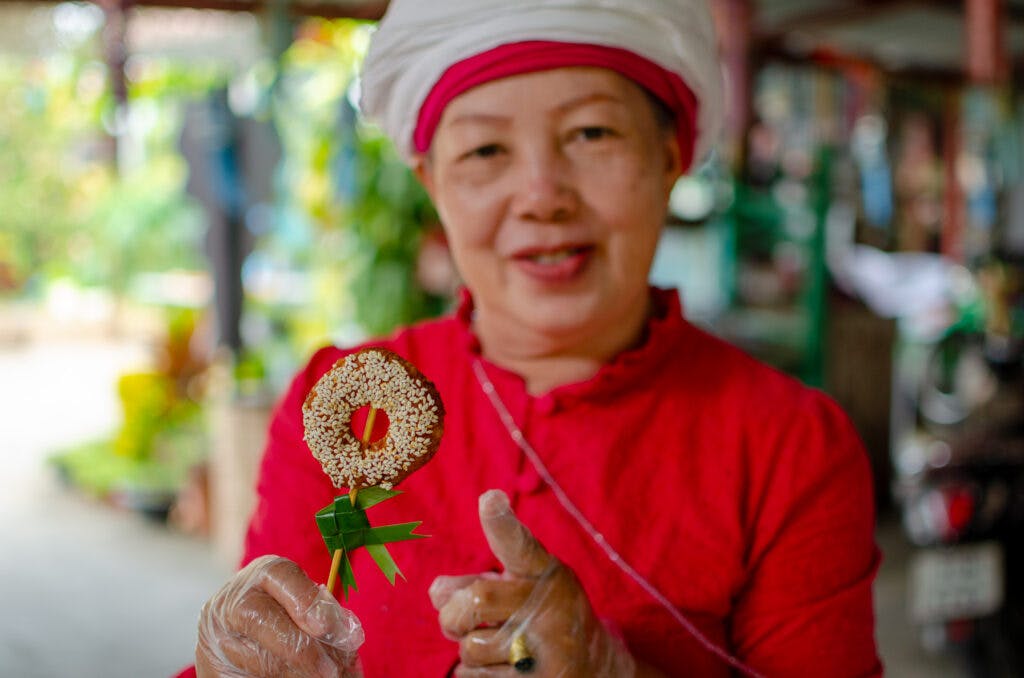
How do the khanom wongs taste? They are slightly sticky on the inside and stringy. On the outside, they are crispy. Compared to what I know from Europe, khanom wong are not heavy on flavor. They are neither too fatty and heavy, nor sweet, and because of their size you can eat quite a lot of them. A perfect snack for young and old alike.
Fish Tai Lue style
You can get grilled fish very often in Thailand. The first time I ate it was at Tung Tao Lake near Chiang Mai. I never liked the fish before. It was only here that I liked it, but I think it’s because Thai tilapia smells neither of the sea nor of sea mud. It has a lot of meat and few bones, which are of such a size that they are easy to remove and I’m not likely to worry about swallowing them.
The secret of such a fish is also that it is gutted and then lemon grass and herbs are put inside. The whole thing is turned in coarse salt and grilled.
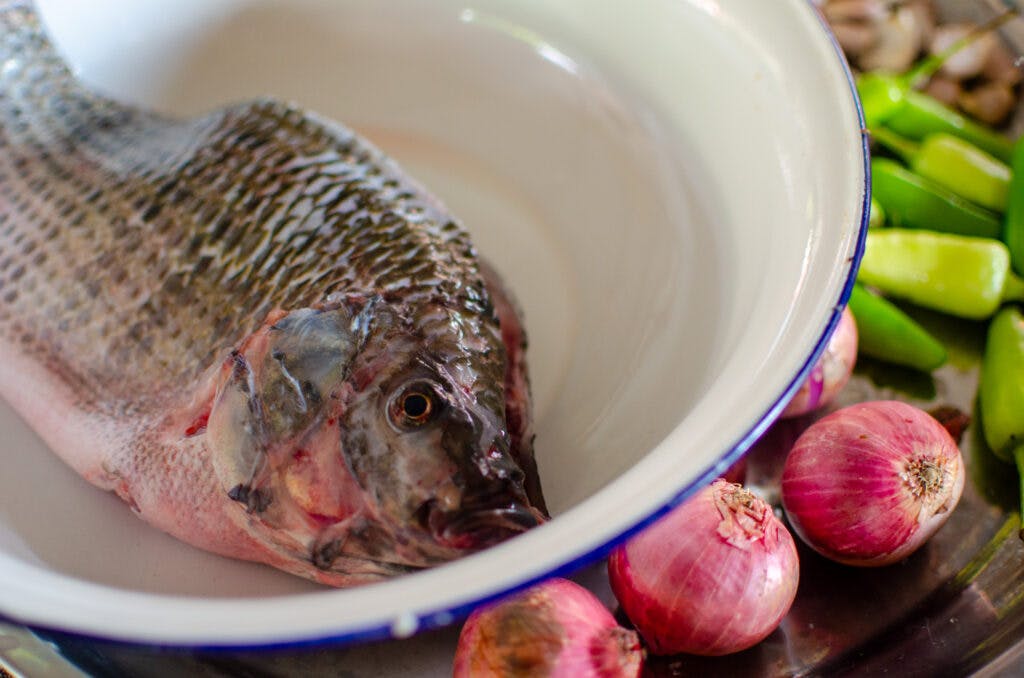
Tai Lue is said to have brought this way of grilling fish to Thailand. Pi Pong showed me a slightly different way to cook it, which is also delicious.
I chopped very finely lemongrass, tiny chili peppers, cilantro and a lot of herbs I don’t know, which we certainly don’t have in Europe. I mixed it all with a couple of tablespoons of shrimp paste.
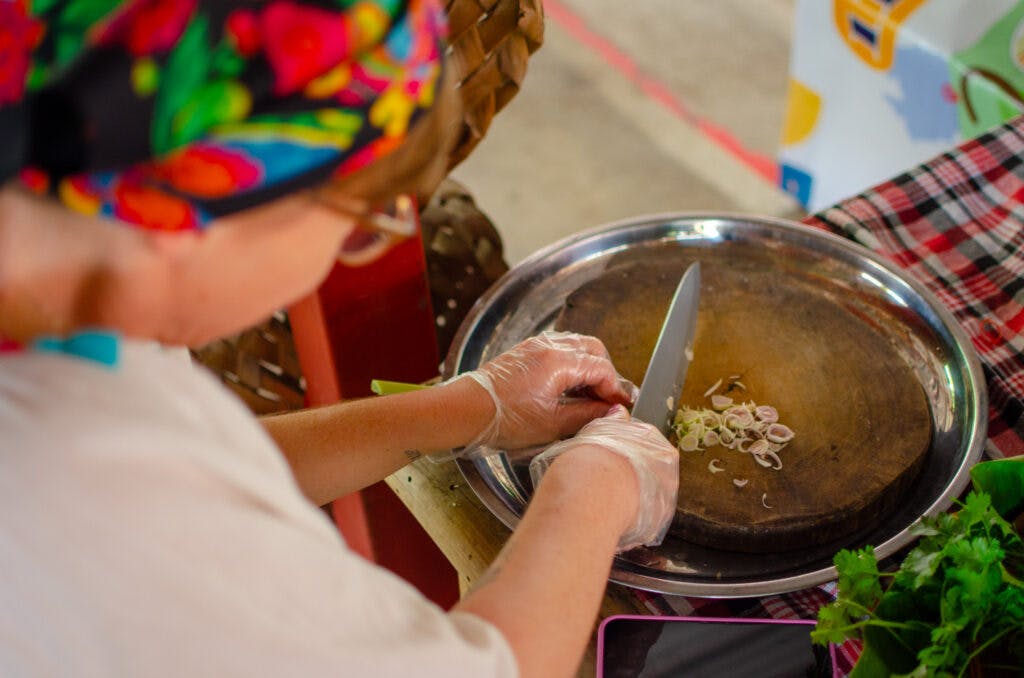
The fish was already prepared. I put the whole thing inside. Pi Pong helped me place the fish on a special metal grid, which we in turn placed on top of a special cast-iron bucket, in which the coals were already glowing. The same bucket is used for mookata – Thai hot pot.
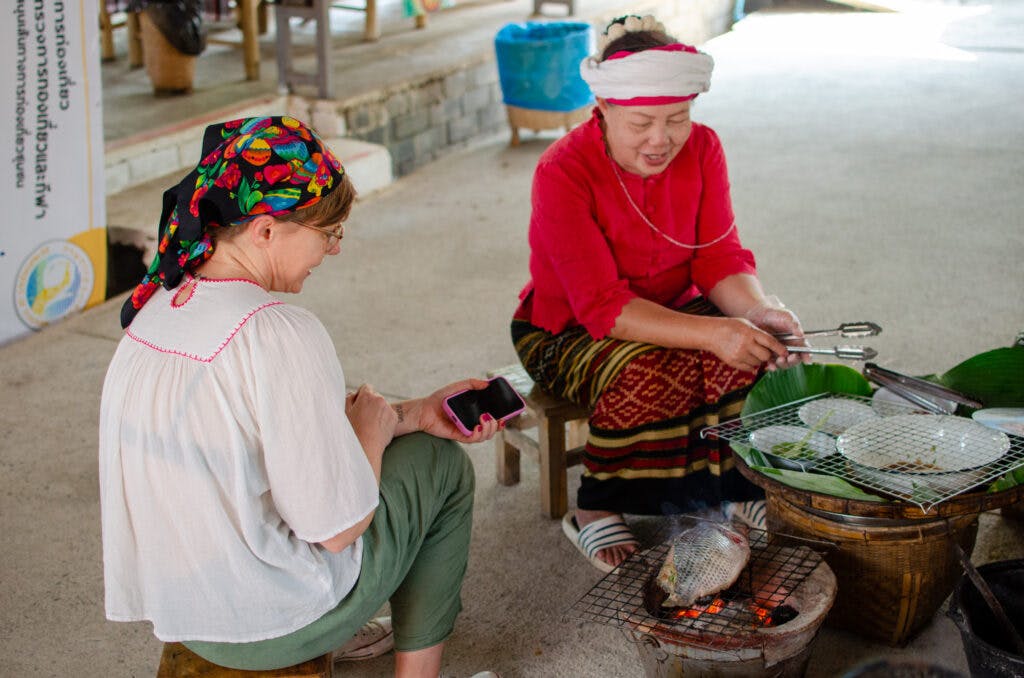
After about 30 minutes of turning the fish, watching to make sure it didn’t burn, the dish was ready for consumption.
To go with it we had rice, bought by Pi Pong’s daughter-in-law, and a Thai omelet with herbs. It was quite a feast!
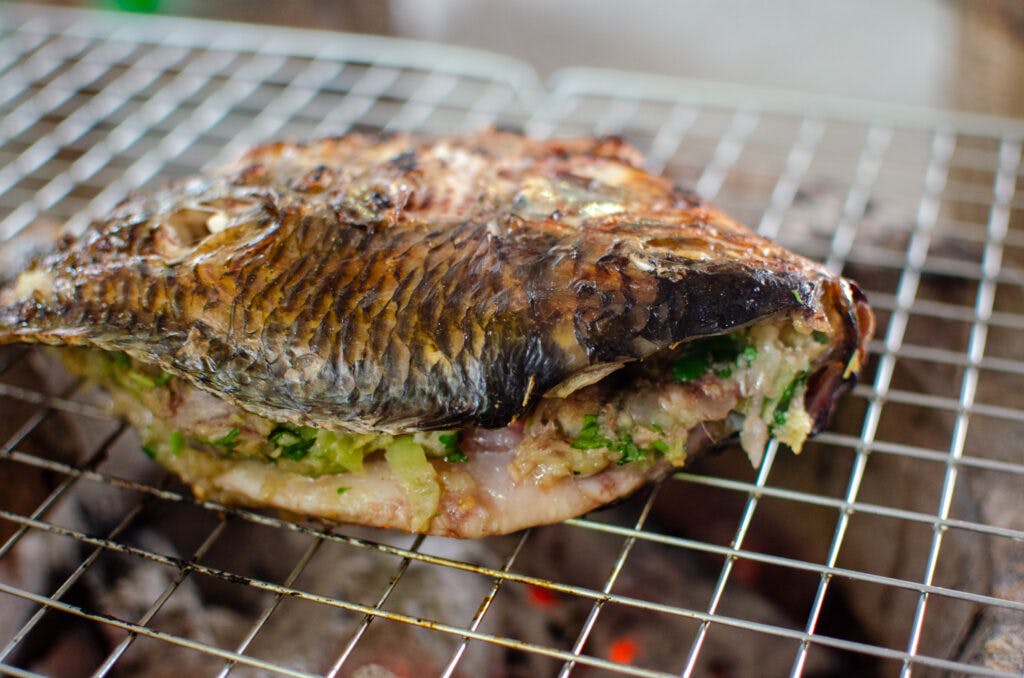
The Tai Lue tribe are quiet, humble people. Many of them live in the villages. They grow their own vegetables, fish, and sometimes buy something at the markets. Everything I ate, except for the rice, came from the home of Pi Pong and her neighbors. Everything fresh, fragrant, tasty, wonderful. On top of that, Pi Pong and her family were extremely kind and courteous to me. I felt like I had come to visit my distant relatives there. I learned how to make 2 dishes. I don’t know if I’ll ever cook them again, lacking the ingredients and conditions for grilling, but I’ll definitely remember what to do after what. Anyway, who knows, maybe someday this knowledge will come in handy?
Tai Lue Community – Location
Tai Lue live in Doi Saket, a 30-minute drive from Chiang Mai. It is a small village where there is not much.
The Community Center is open to the public. They have some examples of houses, instruments and information here. Unfortunately, there is nothing here in English, but you can freely guess what the Tai Lue people want to say and convey through these displays.
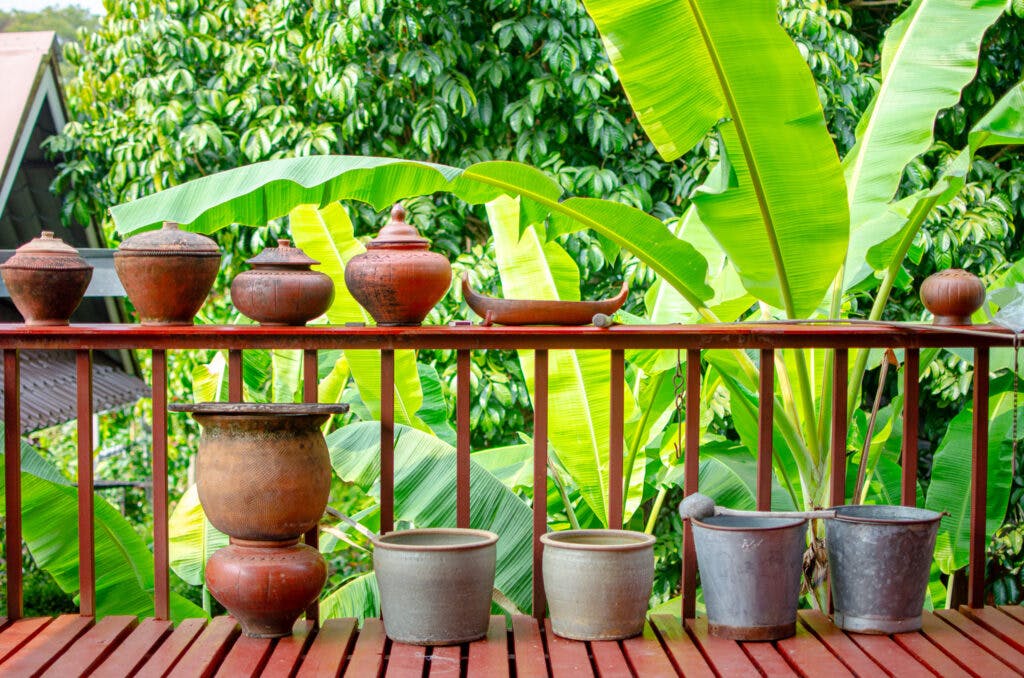
In addition, their women are famous for spinning and making beautiful clothes. There is a spinning room at the Community Center and someone will be sure to show you how the materials are made. There’s also a ready-to-wear store across the street.
In my opinion, a visit to the Tai Lue house in Doi Saket is an excellent substitute for the very touristy village of Long Neck, which is not even a real village where these people live. In addition, you can really spend a nice time here in the company of the locals and delve into their culture.
You can get here by your own transportation. Driving a scooter is quite easy (be careful on the main road!). A rented car will also safely manage. Alternatively, hire a driver to pick you up afterwards.
Tai Lue Community Centre
Moo 4, Luang Nua Subdistrict, Doi Saket District, Chiang Mai Province
Website
Phone: 0869191915
Map
How to do the cooking course?
After the whole cooking course, I asked Pi Pong how much I should pay her. I guessed from her reaction that this was probably the first time she had done such a course. She quoted me 1,000 THB. I did a quick check of course prices in Chiang Mai and paid her THB 2,000.
If you want to take such a course as well, my advice is to go there first and make arrangements with them for a specific date. Eventually, you can call. Note – no one there speaks English, so it’s better to ask someone you know who speaks Thai to call and arrange for you to take a cooking course at Tai Lue House.
Even if you don’t speak Thai, you will definitely get along in the course. Tai Lue are smug, they show you everything thoroughly, even the old ladies use Google Translate.